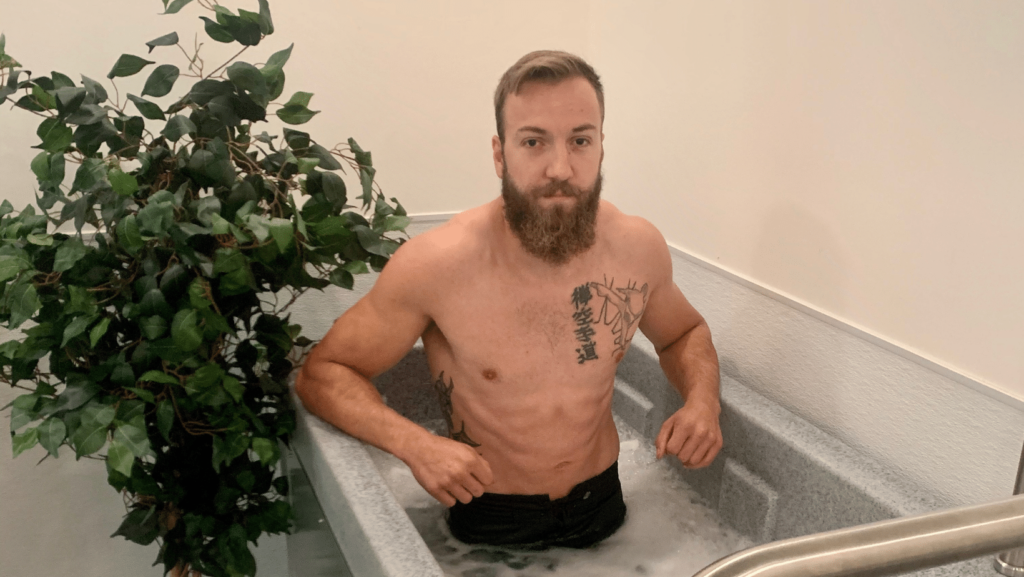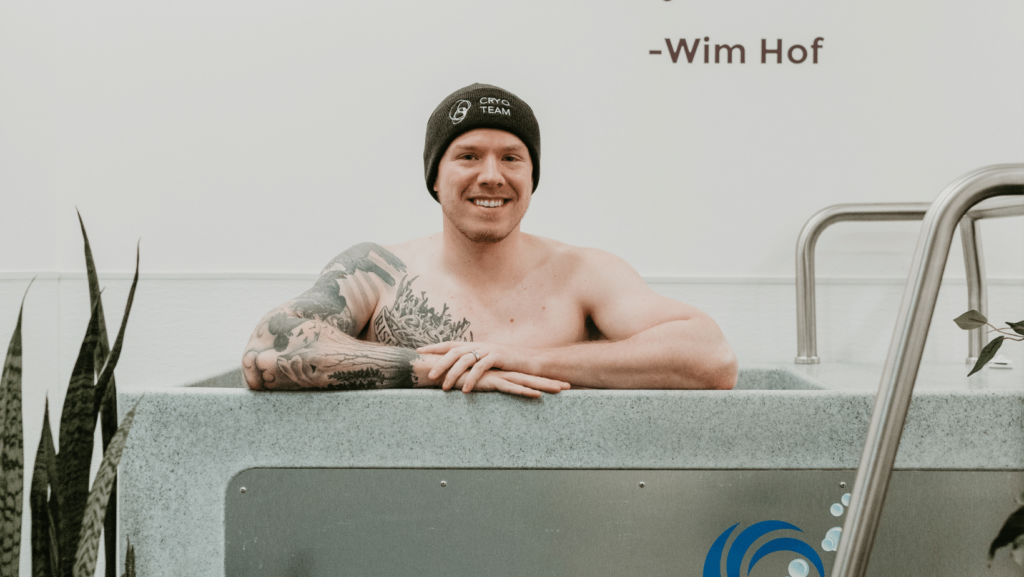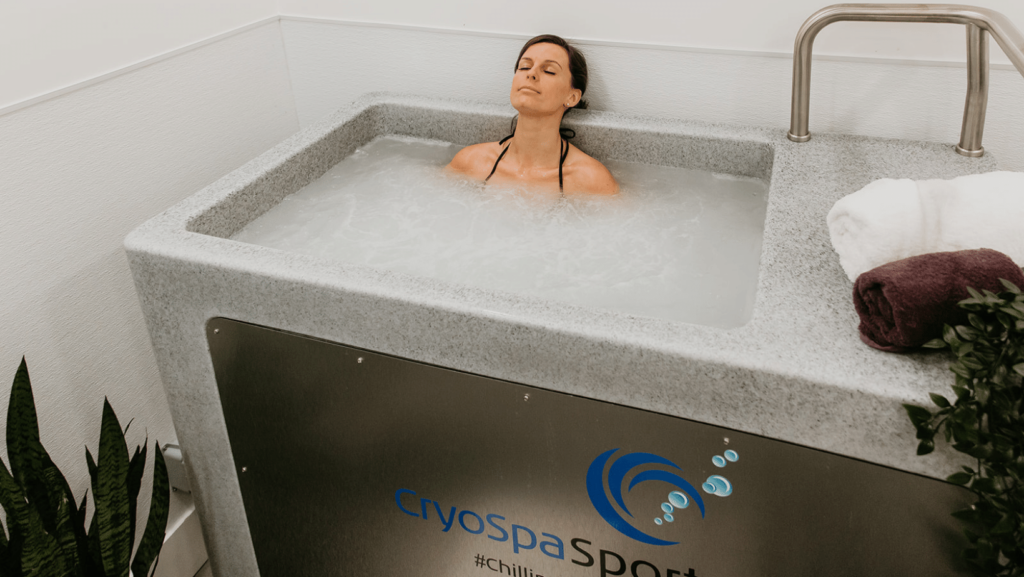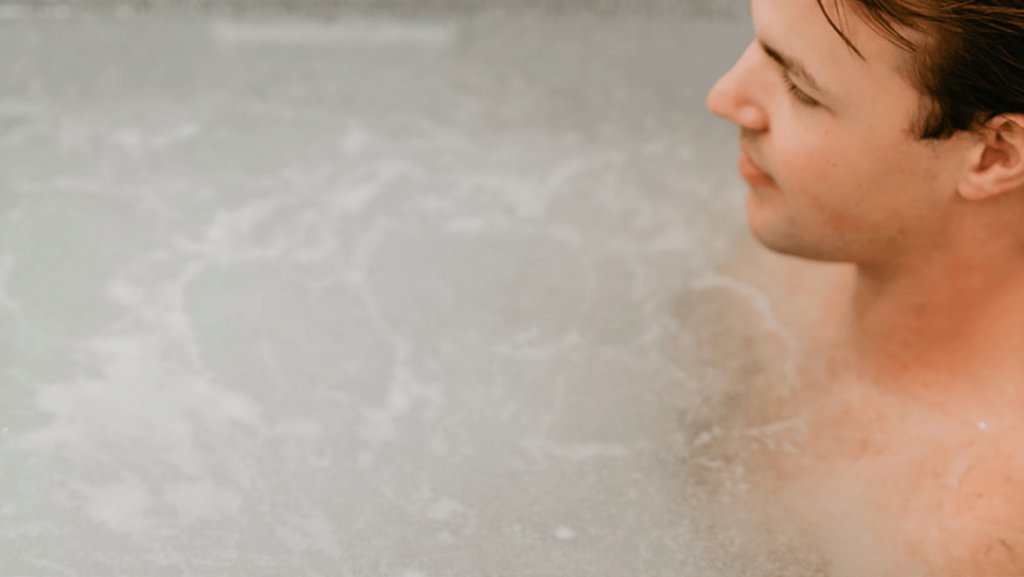The benefits of cold water immersion (CWI) therapy are numerous and well documented in sport recovery and chronic inflammatory conditions including fibromyalgia and rheumatoid arthritis. Individuals with mood disorders including anxiety and depression, as well as those who experience sleep disturbances have all shown benefit with CWI therapy as well. CWI is also a highly beneficial tool in the development of mindfulness practice and breathing techniques.
The question posed by many people is, “depending on my needs, when and how should I use cold water immersion therapy?”. The purpose of this writing will be to highlight the answers to some of those questions.
A) The Athlete:

The benefits of CWI for the athlete are numerous.(1)(2)(3)(4)(5) There is no major sports team in North America that does not use CWI. Additionally, most individual sport professional athletes use CWI as a part of the training regimen. As an example, there has been no Wimbledon champion since 2008, who has not used CWI during the tournament.
The most commonly studied area of benefit of CWI therapy in the athlete is Delayed Onset Muscle Soreness (DOMS) and time to recovery (TR). The basic tenant of when to use CWI therapy in the athlete is, “when you are sore or anticipate being sore, then get in the tub”. At recovery lab, we believe the one exception is “Heavy Day”. “Heavy Day or Days” are those days when we push our effort to the maximum, and specifically, those days when we tend to lift the most in the hopes of developing mass or “bulk”. Peak muscular hypertrophy tends to occur on those days when we “lift heavy”. This type of exertion creates small micro tears throughout the muscle group in question. It’s the natural healing of these muscles, and the associated inflammation, that tends to produce some of the muscle hypertrophy that some athletes desire. CWI therapy tends to accelerate the healing response and reduces inflammation and can, theoretically, reduce the desired growth in muscle mass. What about those athletes such as gym rats and cross-fitters who often have many successive days of heavier lifting? While CWI therapy may slow the rapid development of bulk, it certainly doesn’t stop it. What CWI therapy does do is reduce overall soreness, thereby allowing those individuals to continue to push themselves at their peak during successive daily workouts. For individuals working out on successive days and at least 3-4 times per week, our protocols suggest using CWI therapy at least twice a week. If you do have a day when you tend to lift “heavier” than others in a week, that would be the day we would suggest taking a day off from CWI therapy to allow for the expected benefit of the microtears and growth. We would suggest the only lifting athlete who may want to consider avoiding CWI therapy are bodybuilders who are in their pre-competition phase and are looking for maximum growth. Long distance athletes such as runners and cyclists also benefit when CWI therapy is used at least twice a week. We suggest using CWI therapy in endurnce athletes on higher exertion days, such as longer training distances and specifically, after “heavy” days such as hill training and speed work. In the endurance athlete, the bounce back affect and the ability to train at our peak levels greatly outweighs any desire for added bulk, and this is why we suggest using it on “heavy “ days, unlike the lifting athlete.
There is some debate about CWI immediately prior to or even in game treatment between periods or between halves. There is no clear indication or proof one way or another based on the literature so we suggest trialing any CWI exposure around practices to determine your individual preference and best athletic response.
Tub time: for all of our protocols we tend to suggest a tub time of 3-6 minutes. For the recovering athlete we tend to suggest a longer interval of 6 minutes. Suggested use is 2-4 times/ week depending on the sport and the phase of training and competition. Please ask us at Recovery Lab about your specific needs and desired effect.
B) Inflammatory conditions such as fibromyalgia and rheumatoid arthritis:

Systemic inflammatory conditions have been demonstrated to benefit from CWI therapy. (6)(7)(8) As one would expect, CWI therapy has anti-inflammatory properties through a number of factors that include vasoconstriction, a reduction in inflammatory cells and immune mediators as well as decreasing local and generalized edema. One factor to consider is that many chronic inflammatory conditions are associated with fatigue. While short durations of CWI therapy actually improve alertness, prolonged sessions of CWI therapy can induce some fatigue, particularly if used frequently. It’s for this primary reason that we suggest that CWI therapy for chronic inflammatory conditions be used more frequently but the duration of the exposure is reduced. It’s also important to note that some inflammatory conditions are associated with Raynaud’s phenomenon (Raynaud’s can also occur by itself without an associated condition). While some studies actually suggest that CWI therapy can be beneficial in long term cold conditioning and treatment of Raynaud’s, we at Recovery Lab do not believe the studies to be definitive or proven, and for this reason, we consider Raynaud’s to be a relative contraindication to CWI therapy, depending on individual tolerance.
Tub time: While 3-6 min sessions are certainly safe, it’s our suggestion that clients use CWI therapy for chronic inflammatory conditions 3-4 times per week but limit those sessions to 3-4 minutes to assess the treatment’s effect on, and tolerance of potential fatigue. Optimum benefit is typically with 3-4treatments per week. Please ask us at Recovery Lab about your specific needs and desired effect.
C) Mood disorders including Anxiety, depression & sleep disturbances:

When people think of CWI therapy, invariably the first thing that comes to mind is athletes and injuries. Perhaps the strongest evidence for the benefits of CWI come with the effects of cold-water therapy on our moods and our ability to sleep. (8)(9) Mood disorders and prolonged sleep disorders can affect as much as 40% of our population at one point in time in their life. The potential non-medicinal benefits of CWI on these ailments shouldn’t be overlooked as a potential benefit. It’s easy to deliver, relatively inexpensive and does not have any of the side effects seen with some prescription medications. Its purpose is to not necessarily replace medication or other therapies but rather, serves as an accessory treatment or add on treatment for these disorders. That said, individuals with milder symptoms may receive enough benefit as to reduce the need for some traditional approaches. Short exposure to CWI therapy typically heightens awareness while longer exposures exceeding 10 minutes can produce fatigue. For the indications of mood and sleep disorders, 3-4 treatments per week are suggested.
Tub time: Tub times of 3-6 minutes are recommended depending on tolerance. We encourage clients to get as close to the 6 minute exposure time as possible. For maximum benefit. Literature suggests an exposure of 6-10 minutes. We suggest starting with 6 minutes to determine tolerance. After 2-3 weeks, depending on response and tolerance, longer exposures can certainly be considered. For mood and sleep issues, we suggest a protocol of -4 treatments per week. Please ask our Recovery Lab team about your specific needs and desired effect.
Connect with Recovery Lab staff by calling 587.819.5629 or book your next CryoSpa Appointment online here: CryoSpa Bookings
References:
9. Adapted cold shower as a potential treatment for depression Nikolai A Shevchuk. Med Hypotheses.



